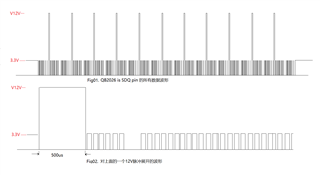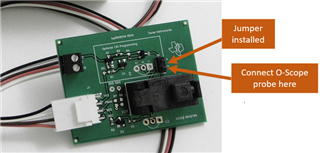Tool/software:
Hi all
When I use the circuit provided by EVM of BQ2026 to write data to EPROM, sometimes I can't write all bytes of data completely, sometimes I can only write 8 bytes. The waveform of SDQ pin of BQ2026 measured is shown in the attachment. 01 is the whole waveform, and 02 is the detailed waveform from one 12V pulse to the next pulse. Please assist and support. Thank you!
1. Is the 12V Pulse to be maintatined? Or is the 12V pulse turned off as long as a 480us pulse is provided? I am currently using this scheme.
2. After all the data is sent to the cache, is it enough to output only one 480us pulse, instead of multiple 12V pulses like my current one.



